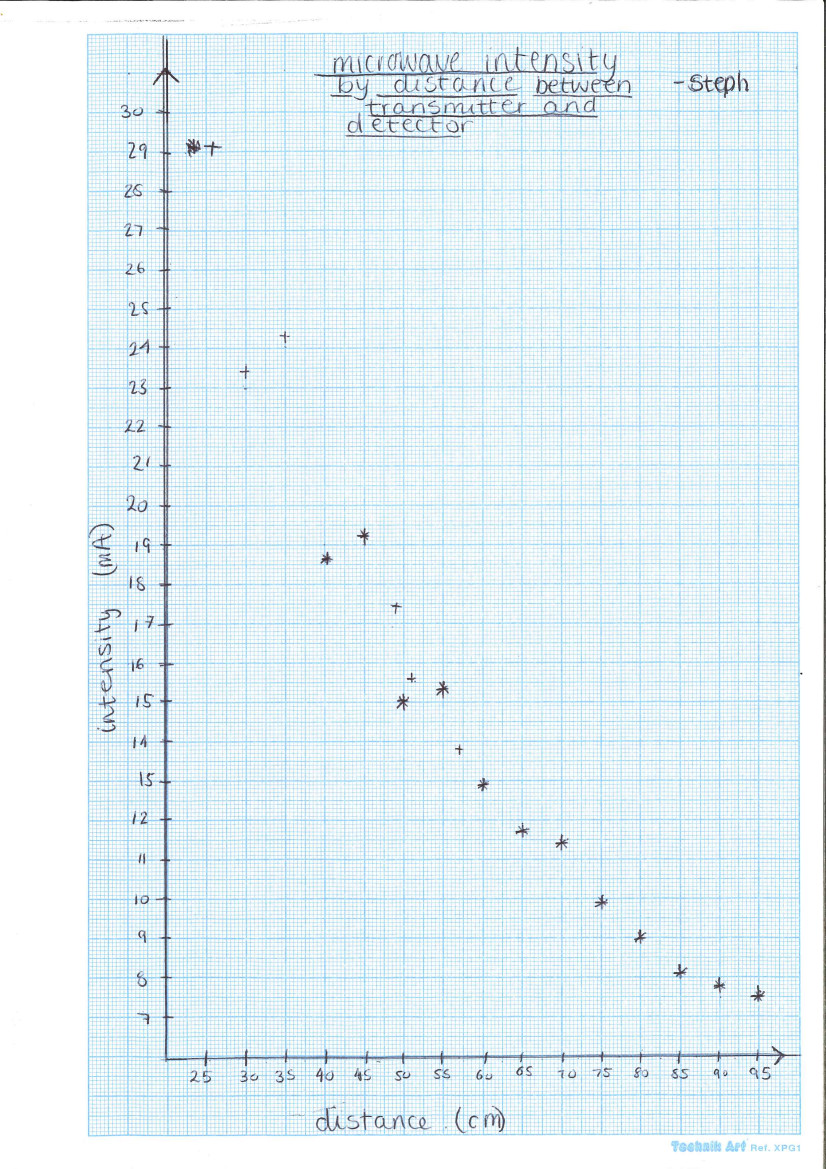Our radiowave setups have arrived and students have pioneered our first “radiowave optics”. This is our demonstration of the “filtering more yields more signal” experiment:

Interestingly, this is characterized as microwave optics by the provider, although these are short radiowaves. Indeed some nomenclature defines microwaves up to 10cm. Possibly because these are not useful for radio-applications, although I still find it strange to label micro something that is larger than your hand.
This is a first characterization of our setup, testing the inverse square law:

We like to plot these as $1/R^2$ to see if this follows the inverse square law, but in this case the natural variables are also interesting because, it doesn’t… there are oscillations, particularly notable at small distances (also at 70cm, it’s probably not an outlier). Here oscillations are caused by resonances and standing waves. The wavelength, I think I picked up from yesterday discussions in the lab, is 2.8cm, and more resolution is definitely called for to see the type of Physics that takes over geometry in this case, as well as possibly at larger distances where the law should be excellently satisfied (and there’s still plenty of signal at about 1m and the fall-off we have observed so far is sub-quadratic). That would require for students to tweak a bit the setup. So this is a good starting point. Maybe a nice student-research project, possibly combined with inverse square of gamma rays and light. There are great experiments we’re looking forward to do, including the double slit (of course) but also Bragg diffraction. So we’ll see much more of these things.
